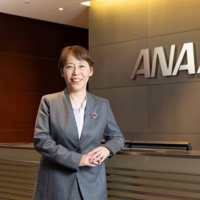Air samples taken near the U.S. Naval Air Station at Atsugi, Kanagawa Prefecture, exceeded the national tolerable standard of dioxin concentrations, the Environment Ministry said Tuesday.
Samples from April 2000 to March found that, on average, two sites within the military facility fell within the environmental standard of 0.6 picograms per cubic meter of air, while a third point south of the naval air station topped acceptable concentrations.
A picogram is a trillionth of one gram.
The survey point that exceeded government limits logged an average of 0.63 picograms and is located roughly 200 meters south of three incinerators, run until April by a private company.
The firm, Envirotech, stopped operating the incinerators after demands from the U.S. military spurred the Japanese government to pay some 5.16 billion yen in compensation.
Government officials said the point exceeding government-stipulated standards is inside an industrial area, Ayase Industrial Park, and that environmental standards do not apply to industrial districts.
"There are employees that are there in the afternoon, but they are not there for 24 hours straight. Basically we do not think it is a problem," said Takeshi Okuda of the ministry's Environmental Management Bureau's Air Quality Management Division.
The complex reportedly houses some 26 companies that employ about 800 people.
The two sites surveyed within the U.S. military facility exceeded the environmental standard for dioxin levels on occasion, but the annual average fell within acceptable limits.
One of the on-base survey points 330 meters north of the incinerators, yielded the highest level of dioxin in ambient air ever in Japan in the summer of 1999 when it logged a value of 54 picograms.
Envirotech is to finish disassembling the three incinerators by December.


















With your current subscription plan you can comment on stories. However, before writing your first comment, please create a display name in the Profile section of your subscriber account page.